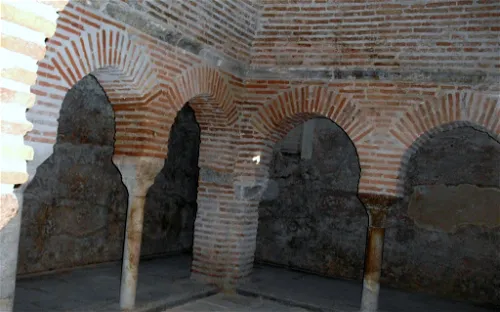Arab Baths and its collection
The Arab Baths of Baza, also known as the Baths of the Jewish Quarter, are a significant historical site dating back to the 13th century. These baths are a prime example of urban baths associated with the ancient mosque, now the Church of Santiago. They were located in the old Marzuela suburb, now the Santiago neighborhood. The baths were discovered by historian Manuel Gómez Moreno in the late 19th century.
Architectural Design of the Arab Baths of Baza
The Arab Baths of Baza are structured into three main rooms. The roofs of the baths were made using barrel or semicircular vaults, some of which were also skewed or half-dome shaped. These were constructed with a double row of bricks. The vaults were designed this way to prevent the condensation of water vapor on the ceiling and to allow the drops to slide down the side walls. They were plastered with lime mortar, both on the outside and inside, in this case also with paintings, usually in reddish tones.
The Three Main Rooms of the Arab Baths of Baza
The Arab Baths of Baza consisted of three main rooms, each serving a different purpose. The al-bayt al-barid was equivalent to the frigidarium of Roman baths, serving for the re-acclimatization of bathers before leaving the building. The al-bayt al-wastani was equivalent to the tepidarium of a Roman bath, serving as the main room of the bath where most of the stay and activity of the bathers took place. The al-bayt al-sajun was equivalent to the caldarium of a Roman bath, where hot water baths were received and acted as a stove or sauna.
History & Anthropology Archaeology Historic house Religion Religious building

